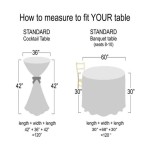Backyard Vegetable Garden Ideas: Cultivating Fresh Produce at Home
The allure of fresh, homegrown vegetables is a powerful motivator for many homeowners. A backyard vegetable garden offers a sustainable and rewarding way to supplement grocery needs, reduce environmental impact, and enjoy the therapeutic benefits of gardening. Successful vegetable gardening, however, requires thoughtful planning and execution. This article explores various backyard vegetable garden ideas, providing insights into design, layout, plant selection, and best practices for a thriving garden.
Several factors influence the optimal design for a backyard vegetable garden. These include available space, sunlight exposure, soil quality, water access, and personal preferences. A careful assessment of these elements is crucial before embarking on the gardening project.
Planning the Garden Layout
The layout of a vegetable garden significantly impacts its efficiency and productivity. Consider these layout options:
*Traditional Row Gardening:
This method involves planting vegetables in straight rows, typically running north to south to maximize sunlight exposure. Row gardening is well-suited for larger spaces and facilitates easy access for weeding and harvesting. The spacing between rows should be sufficient to accommodate the mature size of the plants and allow for comfortable movement. *Raised Beds:
Raised beds offer several advantages, particularly in areas with poor soil quality or limited space. They provide improved drainage, easier weed control, and allow for customized soil mixes. Raised beds can be constructed from various materials, including wood, stone, or concrete blocks. Their raised elevation makes them accessible to those with mobility limitations. *Square Foot Gardening:
This intensive gardening technique divides a raised bed into a grid of 1-foot squares. Each square is dedicated to a specific number of plants, depending on their size. Square foot gardening maximizes space utilization and simplifies planting and maintenance. This method is a good option for beginners and those with small gardens. *Container Gardening:
Container gardening is ideal for small spaces such as patios, balconies, or decks. Vegetables can be grown in pots, hanging baskets, or other containers. Choosing the right container size and potting mix is important for the health of the plants. Regular watering and fertilization are essential in container gardening. *Vertical Gardening:
Vertical gardening maximizes space by growing plants upwards on trellises, fences, or walls. This method is well-suited for vining plants such as tomatoes, cucumbers, and beans. Vertical gardens add visual interest and can improve air circulation around plants.Regardless of the chosen layout, it is important to consider the placement of plants based on their sunlight requirements. Taller plants should be positioned strategically to avoid shading shorter plants. Grouping plants with similar water and nutrient needs can also simplify garden maintenance.
Sunlight is a critical factor for successful vegetable gardening. Most vegetables require at least six hours of direct sunlight per day. Observe the sunlight patterns in the backyard throughout the day to identify the sunniest areas. Consider any trees, buildings, or other structures that might cast shadows. If sunlight is limited, choose shade-tolerant vegetables such as lettuce, spinach, and kale.
Soil quality is another key determinant of plant health and productivity. Most vegetables prefer well-drained soil that is rich in organic matter. Conduct a soil test to determine the pH level and nutrient content of the soil. Amend the soil with compost, manure, or other organic materials to improve its fertility and drainage. Consider adding fertilizer to provide plants with the nutrients they need. Be mindful to consider the type of fertilizer to use and the amount applied. Using organic fertilizer can minimize exposing yourself and those around you to harmful chemicals.
Water is essential for plant growth and survival. Ensure that the garden has access to a reliable water source. Consider installing a drip irrigation system or soaker hoses to deliver water directly to the roots of the plants, minimizing water waste. Water deeply and infrequently, rather than shallowly and frequently, to encourage deep root growth.
Selecting Vegetables for the Garden
Choosing the right vegetables to grow is a fundamental decision. Consider these factors when selecting vegetable varieties:
*Climate:
Select vegetables that are well-suited to the local climate. Consider the length of the growing season, the average temperatures, and the amount of rainfall. *Personal Preferences:
Grow the vegetables that are enjoyed the most. There's little sense in dedicating space to vegetables that won't be eaten. *Space Availability:
Choose vegetables that are appropriate for the available space. Compact varieties are well-suited for small gardens. *Disease Resistance:
Select disease-resistant varieties to minimize the risk of plant diseases. *Ease of Growing:
Begin with easy-to-grow vegetables such as lettuce, tomatoes, and zucchini, especially for beginners. *Succession Planting:
Planting intervals of the same crop can create a continuous cycle of harvesting when one plant is done, another is ready to take over.Some popular vegetables for backyard gardens include tomatoes, peppers, cucumbers, zucchini, lettuce, spinach, kale, beans, peas, carrots, radishes, and herbs.
Starting vegetables from seeds or transplants is a commonly debated topic. Starting seeds indoors allows for a head start on the growing season, especially in areas with short summers. Transplants are already established plants, which can reduce the time to harvest. However, they are generally more expensive than seeds, and may not be available in as wide a variety. Many vegetables need to be started indoors weeks before warm weather arrives. These plants would include any peppers, tomatoes, eggplant, and other warm-weather crops. Starting seeds indoors requires proper lighting and moisture control.
Companion planting involves growing certain plants together to benefit each other. For example, basil is said to improve the flavor of tomatoes and repel pests. Marigolds are known to repel nematodes and other pests. Companion planting can help to reduce the need for pesticides and improve overall garden health. Researching companion planting options can help to maximize the garden's success.
Maintaining the Vegetable Garden
Regular maintenance is essential for a thriving vegetable garden. Key maintenance tasks include:
*Watering:
Water plants regularly, especially during dry periods. Monitor the soil moisture levels and adjust watering as needed. *Weeding:
Remove weeds regularly to prevent them from competing with the vegetables for water, nutrients, and sunlight. Weed control options include hand-pulling, hoeing, and mulching. *Fertilizing:
Fertilize plants regularly with a balanced fertilizer. Follow the package instructions for application rates. *Pest Control:
Monitor plants for pests such as aphids, caterpillars, and squash bugs. Use organic pest control methods such as insecticidal soap, neem oil, or hand-picking. *Disease Control:
Prevent diseases by providing good air circulation, avoiding overwatering, and removing diseased plant material. Use organic fungicides if necessary. *Pruning:
Prune tomatoes, peppers, and other vining plants to improve air circulation and fruit production. *Mulching:
Applying mulch around plants conserves moisture, suppresses weeds, and regulates soil temperature. Mulch options include straw, wood chips, and compost. *Harvesting:
Harvest vegetables when they are ripe and at their peak flavor. Regular harvesting encourages continued production.Mulching is one of the most important aspects of successful vegetable gardening. Mulch helps to retain moisture in the soil, suppress weeds, and regulate soil temperature. Organic mulches such as straw, wood chips, and compost also add nutrients to the soil as they decompose. Apply a thick layer of mulch around plants, being careful not to cover the stems or leaves.
Pest and disease control are essential for a healthy vegetable garden. Regularly inspect plants for signs of pests or diseases. If pests are detected, use organic pest control methods such as insecticidal soap, neem oil, or hand-picking. For diseases, remove diseased plant material and improve air circulation around plants. Crop rotation helps to prevent the buildup of soilborne diseases and pests.
Extending the growing season can be achieved through season extension techniques. Cold frames, row covers, and greenhouses can protect plants from frost and extend the growing season into the fall and winter. These techniques allow for the cultivation of vegetables even in colder climates or during off-season months.
Composting is a valuable practice for vegetable gardeners. Compost is a rich soil amendment that improves soil fertility and structure. It can be made from kitchen scraps, yard waste, and other organic materials. Compost can be added to the garden before planting or used as a side dressing during the growing season.
Succession planting involves planting multiple crops of the same vegetable at intervals throughout the growing season. This ensures a continuous harvest of fresh vegetables. For example, lettuce, spinach, and radishes can be planted every few weeks for a steady supply.
Harvesting vegetables at the right time is essential for optimal flavor and quality. Harvest vegetables when they are ripe and at their peak flavor. Regularly check the garden for ripe vegetables and harvest them promptly. Overripe vegetables can become tough or bitter.
By implementing these backyard vegetable garden ideas, homeowners can create a productive and rewarding garden that provides fresh, healthy produce throughout the growing season. Careful planning, thoughtful plant selection, and diligent maintenance are all key to success. The benefits of a backyard vegetable garden extend beyond fresh produce to include improved health, reduced environmental impact, and the satisfaction of growing one's own food.

25 Incredible Vegetable Garden Ideas Trees Com

25 Incredible Vegetable Garden Ideas Trees Com

35 Creative Container Vegetable Garden Ideas A Piece Of Rainbow

Simple Steps To Start A Garden For The Beginner Vegetable Design Small Gardens Backyard

Small Vegetable Garden Ideas Gate

Vegetable Garden Ideas Designs And Layouts For Backyards

Vegetable Garden Layout 7 Best Design Secrets A Piece Of Rainbow

20 Best Vegetable Garden Layout Ideas Planning Plot

17 Beautiful Small Backyard Garden Ideas That Are Easy To Make

Vegetable Garden Ideas Forbes Home








